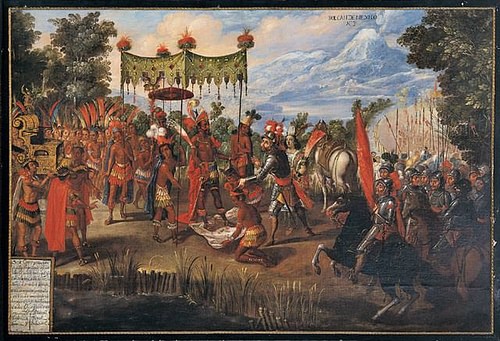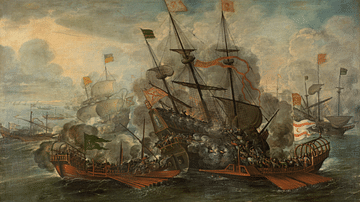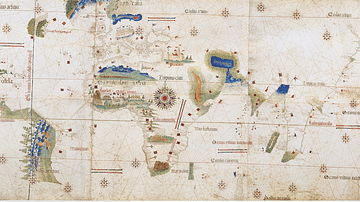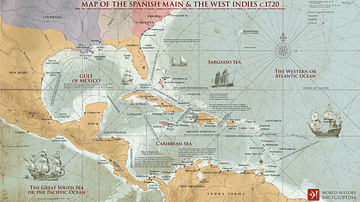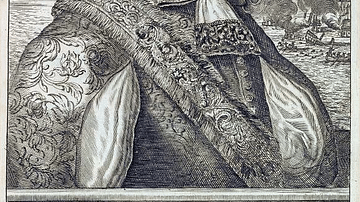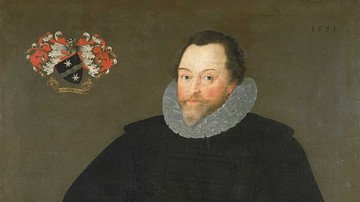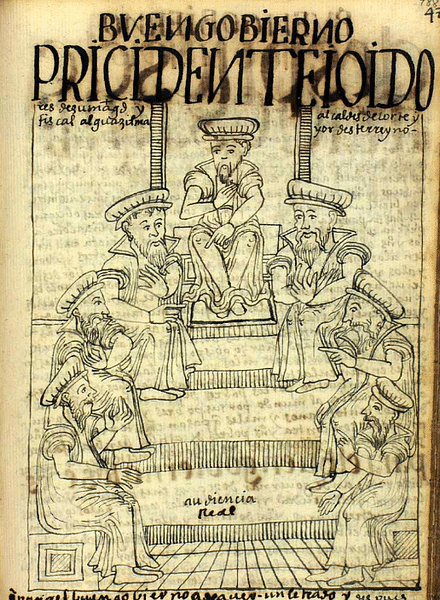
An Audiencia began as a judicial institution in medieval Spain, but in the 16th century, it was applied as the highest form of local government in key cities of the Spanish Empire. An audiencia had a panel of judges made responsible for the political administration of a city and certain criminal and civil legal matters concerning both settlers and indigenous peoples.
Origins & Components
The audiencia has become a noted part of the political apparatus of the colonies within the Spanish Empire, but its origins lie in the medieval judicial institution established in Spain itself. This high court institution was then adopted by the main cities in the empire in the Americas and the Philippines, beginning with Santo Domingo in 1511. Unlike its Spanish predecessors, the colonial audiencias not only concerned themselves with matters of justice but also politics and commerce. Capitals like Mexico City (formerly Tenochtitlan, capital of the Aztec civilization) were governed by an audiencia which functioned alongside the viceroy and a local captain-general. The viceroy was responsible for a wide swathe of the empire in which the city was located – there were eventually four viceroyalties in the Spanish Empire. The captain-general was a sort of mini-viceroy, who operated in less populated areas of the empire and who could be the local governor with a certain semi-independence from the viceroy. There was, too, the corregidor, a judicial and political officer who directly represented the Spanish Crown and who was responsible for regulating the prices of foodstuffs and maintaining public buildings, streets, squares, and the sanitation in his district. Finally, the four Official Real in each colony were responsible for collecting taxes and revenues. Each man had a key to the strongbox that kept this cash, a safe that could only be opened using all four keys together.
In this multiheaded system at the top end of the colonial government apparatus, the audiencia functioned as a balance of power regarding the viceroy and captain-general, who both reported directly to the Council of the Indies, which was based in Spain and which governed all colonial matters in the Americas and the Spanish East Indies. Audiencias had to work with officials like the head of the local town council (cabildo) and everyone else from the mayor (alcaldes mayores) down to junior administrators. The viceroy, captain-general, and audiencia represented royal interests, while the other institutions below them represented local interests, creating yet another interface of competition for resources and influence.
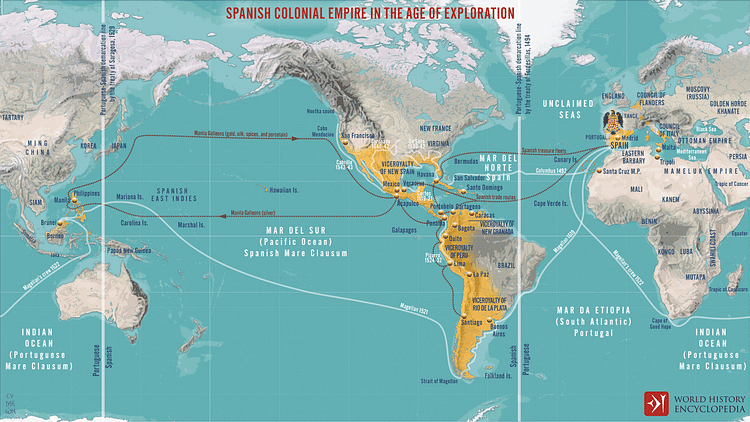
An additional check on the other positions of power was the Church, represented by various ecclesiastical institutions and individuals. Through this separation of responsibilities and duties, the Spanish monarch was better able to keep a check on key colonial administrators and conquistadors ("conquerors") like Hernán Cortés (1485-1547) who led armies to conquer new territories.
Larger audiencias like Mexico City and Lima were initially composed of a panel of four judges (oidores), who were appointed for life. Judges were initially appointed from Spain and on merit so that the positions were dominated by Spanish-born Europeans (peninsulares), but there did develop a system where individuals could buy the position from the state by giving the Crown a large 'donation'. The latter option was attractive to colonial-born Spaniards (criollos) seeking to improve their standing in the community and heighten their influence on local affairs. As the colonies matured, the criollos came to dominate the audiencias.
The judges might have wielded substantial powers, but in order to limit any abuses of that power, there were certain restrictions on what they could and could not do, as the Historical Dictionary of the Spanish Empire notes:
The Crown prohibited oidores from owning property, maintaining a business, holding an encomienda [right to use local labour], attending weddings, receiving gifts, marrying in their area of jurisdiction, or even attending social functions.
(Olson, 451)
A further check on abuses of power was the convention of residencia where, at the end of their term of office, any colonial official was subject to a lengthy inquiry into how they had conducted themselves. Claimants could come forward against the conduct of the official, and, if found guilty of misgovernment, the official, although rarely directly punished, would be unlikely to receive a new position or promotion.
The audiencia panels grew in size as the colonization process was consolidated through the 16th century. However, smaller audiencias had a panel of between three and five judges with sometimes fewer due to the problems of recruiting qualified men and losses due to local diseases. This situation was not helped by the Spanish Crown's deliberate policy of not encouraging colonial officials to stay too long in one place and so become too powerful locally or establish colonial roots (radicados). By the 17th century, Mexico City had a panel of 12 judges whose responsibilities were divided between two separate chambers. The larger chamber was the civil chamber with eight judges. The smaller was the criminal chamber with four judges. In the 18th century, the total number of judges rose to 15. Within each chamber, there were a great number of other officials. There were attorneys (fiscales) – both civil and criminal, notaries, reporters, administrators, and a solicitor and attorney specifically appointed to guard the interests of the poorer members of the community.
Each audiencia had a president, but he had no voting rights, and, at least in theory, he was forbidden from influencing the audiencia's judges and officers in legal matters. The president could be the captain-general or even the viceroy himself in the case of the audiencia of a regional capital like Lima or Mexico City. The viceroy was the most powerful of all colonial officials, but his jurisdiction was so large that he was dependent on many subordinates. The Viceroyalty of New Spain, for example, incorporated what is today Mexico, Central America, parts of the southern United States, the Caribbean, and the Philippines. Frequently, the audiencia acted as an important advisory body for the viceroy so that he could ably govern such a vast geographical area and variety of peoples.
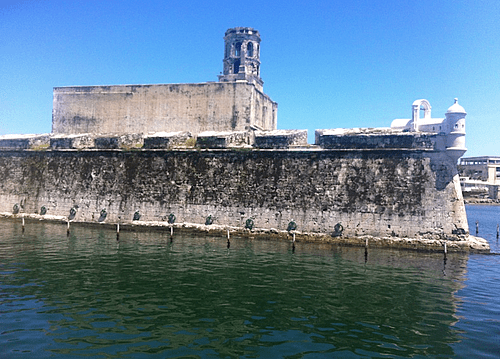
Audiencia Responsibilities
Judicial Function
The audiencias had two main spheres of responsibility: legal and political affairs. The judges of the audiencia were responsible for hearing the appeals against decisions made by the city's lower courts. The jurisdiction of the audiencia was the city itself and all lands within a certain radius of it, typically about five leagues. The rulings of the audiencia regarding criminal matters could not be overturned, but in civil cases, an appeal could be made to the Council of the Indies.
The cases that came before the audiencia were not only those between colonists but also covered relations between settlers and indigenous peoples. One of the major directives of the Council of the Indies was that local peoples should be protected or, at least, not overexploited to the point of starvation and death. In the harsh reality of colonial life, the locals usually came off badly, but it was one of the audiencia's functions to see that the twin aims of the empire – material wealth extraction and conversion of the locals to Christianity – were balanced in such a way that the long-term welfare of the people was considered. Most audiencias convened at least two days per week to specifically hear cases of dispute between indigenous peoples and settlers and between indigenous peoples themselves. The legal fees were not imposed on indigenous peoples. Eventually, the audiencia's role in affairs concerning exclusively indigenous peoples was replaced by the juzgado de indios. Leading church figures were not slow to denounce abuses of power when it came to the welfare of local peoples. Priests included in their sermons criticisms of the audiencia, although whether this achieved very much in practical terms is open to debate.
Political Function
The audiencia was also a political institution. In this role, the audiencia worked with the president and/or viceroy to provide adequate legislation to administrate the city and its population. Regular sessions (acuerdos) made decisions (autos acordados) related to local affairs. Legislation could not usually be passed by a viceroy or a captain-general. The audiencia also had the responsibility to make sure that royal decrees from Spain and the Council of the Indies were being carried out locally. In the interim period between different viceroys or captain-generals (i. e. the individual died unexpectedly), the audiencia took over their duties and responsibilities too. Naturally, there was often some serious political rivalry going on between the viceroy, the captain-general, and the members of the audiencia as men of ambition attempted to dominate local affairs for their own personal gain or prestige.
Commercial Function
A third area of activity of audiencias was trade and commerce, often operating in consultation with royal treasurers. The judges were also responsible for assessing the size and type of tributes indigenous communities were required to pay the Spanish Crown. The audiencia sent out inspectors into the more remote parts of the colony for this purpose. At first, tribute was accepted in the form of goods of value, but gradually the system became more standardised, with payment expected each year in either money or maize.
Finally, the audiencia had an influence on the local labour market since it could grant settlers the right to use forced labour. This form of labour, known as repartimiento in New Spain and mita in the Viceroy of Peru, was imposed on local communities. Indigenous leaders were obliged to send a fixed number of male labourers to work for the colonial administration (rulers of such civilizations as the Aztecs and Incas had used precisely the same setup in their own empires). The team usually worked for a number of weeks before being replaced by another group from the same community. Besides being used for silver mines and large-scale food production, the scheme permitted the colonies to create infrastructures such as roads and bridges, as well as public buildings, churches, convents, and hospitals. Although the labourers were paid a low wage, the removal of a large number of men from a rural community had negative consequences for local farming and created a great social upheaval as families were separated and individuals were obliged to live in urban communities they had no wish to be a part of.
Decline
The performance of a particular audiencia varied depending on time, place, and the individuals involved, but as the historian J. H. Parry notes: "All in all, they formed the most consistently loyal and effective branch of the colonial bureaucracy" (202). The audiencia system came to an end with the crumbling of the Spanish Empire and the rise of the independence movements across the Americas. Interestingly, the audiencia system did create one notable legacy since the judicial areas of many new towns in the newly independent counties did maintain the old audiencia boundaries.
